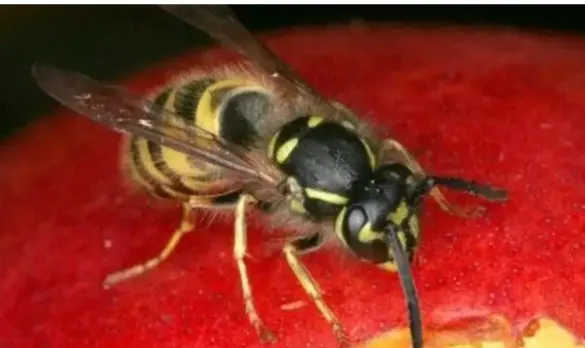The researchers found stinging insects that prey on cockroaches, releasing chemicals to protect themselves from various types of germs in cockroaches. These chemicals are beneficial to humans.

If you see a cockroach running around in a restaurant, you might want to immediately go and eat somewhere else. These insects are known as hosts of various types of germs which, among others, can cause food poisoning. But what if cockroaches become your dinner dish?
The researchers found that stinging insects that prey on cockroaches have changed the way to protect themselves from various types of germs found in animals they prey on. This finding was also useful for humans.
The growth period of emerald jewel wasp larvae, a kind of emerald green stinging insect, takes place in the body of a cockroach. At that time, these insect larvae ate their host animals, said biologist Gudrun Herzner, at the University of Regensburg, Germany. "So, cockroaches are the only food source and place for the growth of these insects," he explained.
Cockroaches like to live in very dirty places, ranging from landfills to public toilets. There, people can find extraordinary amounts of bacteria, fungi and viruses. These microbes can not only damage appetite, but can also damage food and make people sick.
Herzner said, basically the insect larvae faced the same problem as humans. "First of all, larvae must protect their food from damage by microbes, and then must protect themselves from diseases from food that might be caused by these microbes," he explained.
When the insect larvae find a way out of the body of a microbial cockroach, the larvae emit large amounts of clear liquid. Herzner said, "We found that the secretion consisted of antimicrobial substances. Larvae seem to secrete this secretion to all parts of the body of the cockroach, and this is how to clean the host cockroach from microbes. "
Herzner states this is the first time researchers have found insects that use such substances to eradicate microbes.
But there may still be other such materials. Microbiologist Julian Davies at the University of British Columbia said most of the antibiotics used by doctors were found from various microbes that live on the ground. But if researchers turn to the insect world, Davies said, they will find new sources of antibiotics.
The chemicals found by Herzner out of the emerald jewel wasp larvae can overcome the germs that cause tuberculosis and hepatitis C.
But, like various other antimicrobial substances found in other places recently, from frog skins to panda blood, none of them have been used as medicine. Davies said it was difficult to extract a number of useful active chemicals from these sources. Therefore, it will be difficult to produce it in the laboratory. Another problem is that half of the ingredients are toxic, Davies said.